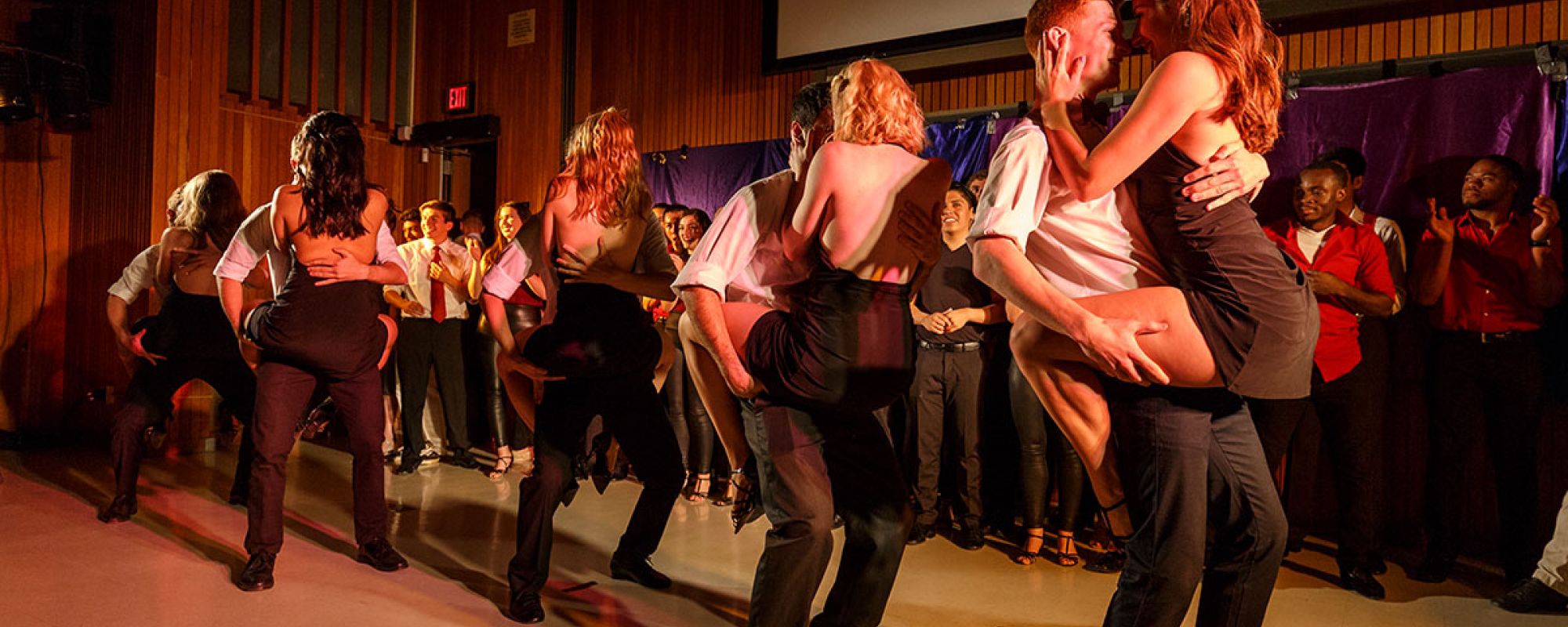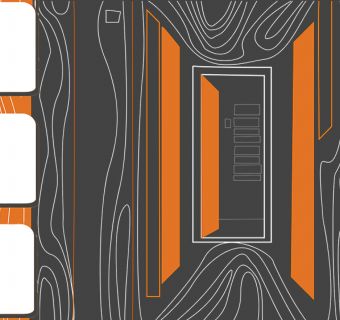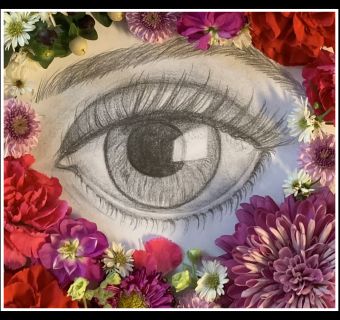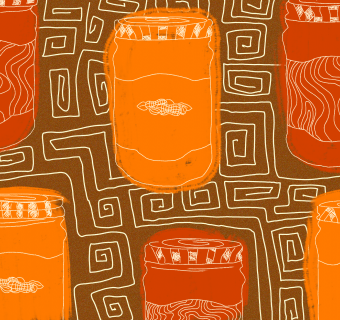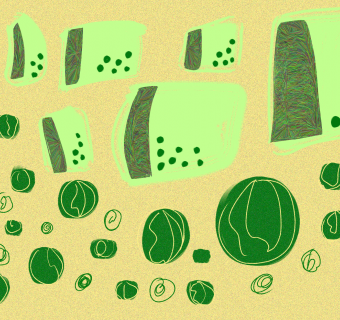I wanted to find out why the University Salsa Club opted for an all-female dance premiering at its upcoming Salsa Showcase. I sat down with current students, Claire and Jaqui, to explore how Salsa Club balances the sensuality of dance with consent and safety, and how it promotes body positivity and confidence. The University Salsa Club is a student-run contracted independent organization at UVA in Charlottesville, VA.
Nicky: So guys. Get in here. Introduce yourselves. How long have you guys been a part of salsa? When did you join and why?
Jaqui: I joined first year first semester, and I came in kind of looking for a new group to hang out with. I wanted to explore new things, and I had heard really good things about this group – that it was fun and relaxed – and you could learn cool things that were useful outside of school. So when I got recruited by the older students they really welcomed me into the club, and since then I've really enjoyed being in the club because of the people who mentored me, and I’ve stayed in it because I’ve really felt motivated to stay in it by my friends and mentors.
Claire: I enjoyed the beginning of my second year so that’s…hm… two years…
Jaqui: Good math.
Claire: Thanks! A friend was interested in going, and then she ditched last minute, but I still went. And I liked the energy there was in the warmup, and then it definitely helped that a couple people really reached out to me and tried to help me with dancing, go to lessons, and social dancing, and I’ve loved it ever since.

Nicky: EVER SINCE. Okay, what do you find most enjoyable/empowering about salsa, and how has it made you to relate to your body in any way shape or form?
Jaqui: I think something about salsa is the fact that anybody can do it, and we really emphasize that from the beginning. So we say that we’re going to start from the bottom up, just with stepping, and I know that makes people feel a lot more comfortable with their body. I know people come in thinking, “I can’t dance, I don’t have rhythm, I can’t do this—“
Nicky: That’s me!
Jaqui: “—it’s not something I can ever get in to!” But it’s really encouraging because people come in from all these different backgrounds, people who are athletes, people who are artists in different ways, and people who have never done this before and they start getting really comfortable and learning about their bodies and feeling really happy just being around people. And I think it helps you come out of your comfort zone to an extent because you learn you can do so much more. And whenever you perform and whenever you social dance, you just start enjoying your time and losing that insecurity, at least for the time being that you’re dancing and around those people. So I find that really special with salsa club.
Claire: I think also what really contributes to being able to open up and have a good time is having a community of people you’re actually regularly dancing with, because that helps you get more comfortable and at ease. It also specifically helps to be with a group of people when you go social dancing, because I know I would have never gone without a circle of friends around me. With that came a really positive group energy, and it’s like an endogenous thing where you get really comfortable and familiar with the people you’re dancing with, and I think any type of dancing ever is very good for body awareness, and salsa specifically is a couples dance; now that’s not what we’re doing specifically this year, but essentially, it is a couples dance. And with that comes the awareness that you need to be really cohesive with your partner, which can be really stressful! But when you get it right, it just feels so good and it’s a lot like meditation to me – focusing intensely on the rhythm and the partner and nothing else really matters in that moment. I’m not thinking “Do I look weird?” or anything like that.

Jaqui: I also think it’s important because whenever you’re dancing in this setting, you’re dancing because you enjoy it, you’re dancing to connect with your partner and to connect with the music. And because it’s generally supposed to be platonic and a kind of welcoming thing, you don't think about it like “this is a sexual dance” and you don't interpret it as something beyond what it is. Some people can interpret incorrectly, but that’s never the context and we correct it immediately.
Claire: Dancing is also so easily associated in college culture as almost…foreplay? Like pre-sexual stuff, and it can get very aggressive in bars. But with salsa there’s this degree of you CAN say no, there’s a very direct conversation that’s happening with your partner, and you’re actively contributing to the dancing so if you’re like, “I don’t want to do this” you can just walk away. Instead of a guy walking up to you, not really asking you to dance or anything… salsa isn’t like that.

Nicky: So how does salsa culture keep that platonic nature with a dance that can get pretty intense and physical? How do you maintain happiness and safety? I’m a part of salsa club and I know you guys in exec always talk about how to keep salsa parties safe and comfortable with close dancing.
Claire: I think it has a lot to do with mentoring. A huge thing we’ve seen is making sure there’s a conversation between especially the women in the club. Obviously the men want to be involved too, but we want to make sure women feel comfortable being involved and coming forward like “Hey this didn’t make me comfortable.” Or right before we go out social dancing, if there’s someone who is new, I’ll say, “Hey, just so you know, if anyone is being pushy or weird or you’re uncomfortable in ANY way, here are a couple things you can do to make it clear that’s not okay. And if you’re still uncomfortable, it is absolutely okay to walk away or say no at the beginning or openly flag me down.” A lot of people don’t understand you can say no to anyone at any time for any reason, so that guidance is really important.
Jaqui: Yeah, and while a lot of our mentoring does happen when we go social dancing, the club is also a lot more aware now that we have brought up these difficult topics in our exec group, especially in the last few years. We’ve seen a lot of changes, even in the way we send out our emails. We always put, “Here are your social dancing do’s and don’ts” because social dancing can happen at clubs, at practice, at parties, whenever music comes on. And I think now people are a lot more aware that people might be feeling uncomfortable and stay with their partners anyway, so I have seen people jump in and tell them “If you ever need to walk away, you can do that.” Or going up to people and saying “You have to be more aware of people’s body language. If they’re feeling uncomfortable, you need to step off. You need to adjust your behavior.” And if they don’t, we’ve taken steps with a couple people to talk to them and say “This is a problem.” It goes beyond just you trying to make a move on someone, people have gone through sexual assault, people have felt uncomfortable, and we don't want them to be deterred from something that is so special to all of us.
Claire: And we have, with a few people after trying to talk to them, just kicked them out. I’m sorry, you can’t be a part of this. I know it can get complicated with dances like bachata that are more sensual, and miscommunications happen, and there is a lot of contact, but everyone has their personal barriers that need to be respected and there definitely is a very clear delineation of what you can expect and what isn’t appropriate.
Jaqui: A consensual dancing experience is mandatory. And you can tell, if you feel any resistance, you need to be able to recognize that, and there’s a zero tolerance policy.

Nicky: So what made you want to do an all-girls dance, without any partner dancing?
Jaqui: I had come up with the idea of doing an all-female dance because I hadn’t done it, and I think that for women to really figure out they can dance and perform without having to be led is really cool. You don’t have to rely on partners. We’ve had all-female dances in the past, just not in the last year or so. I was talking to Claire and was like it would be really cool if we did an all female dance and it would be really cool if we used a female artist, because all of our songs are always male artists. Not because female artists aren’t as great, but because there aren’t as many and they aren’t as represented.
Claire: Yeah it’s surprisingly difficult to find a current female artist. There’s more women in Latina music but dancing Latina music it’s so hard to find.
Jaqui: And it was interesting because whenever we started exploring what we wanted to do, we noticed that most of the all-female dances were geared towards being very sexual to get attention more so than skills-based. So our goal was to really empower women through dance, to learn skills, to feel comfortable with their bodies. I mean obviously it can be sexual without being provocative or weird, and that’s good too.
Claire: I was terrified of doing an all-girls dance, and specifically choreographing one was really intimidating to me because I didn't feel like my individual styling techniques were that solid. But Jenni (a lead instructor) is the one who told me that her all-girls dance she did a year or so ago was great and she was like, “It’s a fantastic way to develop skills you would never learn or develop in lessons when you’re focused on partner work. It will really push you to figure out your own individual style completely independent of the dancers you’re with.” Which I really appreciate because when you’re dancing as a follow, you’re really reliant and focused on being a good follow! And you adapt to whatever rhythm or style they’re doing. So this is really intimidating but really inspiring to get to a point where I’m like I can do this by myself. Specifically, in front of a crowd of people. Intimidating and rewarding.
Nicky: Yeah you make a good point that follows tend to be female and you’re just going with the partner’s directions as best you can; that’s the primary focus of a follow I think. So its nice to do something of your own volition.
Claire: Haha yeah we have a couple of guys who love to be follows, but in general guys are really uncomfortable with it.
Jaqui: In the beginning, men think it’s really emasculating to be follows. I think there’s a power struggle to leading and following too, and some people like to be in control of what’s going to happen. I think it terrifies people to be follows sometimes because they have to read the body language and don't know what’s going to happen. It’s really funny when people start getting comfortable with dancing and music how much more open they are to anything, because they learn the value of learning both. Dancing alone and learning all parts teaches you to listen to music and not just follow direction. Listening to music is such a good skill.
Claire: It’s a process.

Nicky: Anything else you want to say about salsa? On women and salsa perhaps? On THE GENDER BINARY PERHAPS.
Claire: It’s really annoying when girls come up to me and say “I don't have the body type for salsa.”
Nicky: Yeah if you have a corporeal form you have the body for salsa.
Claire: Right! We’ve had all types of bodies in the club! It’s true that skinnier people have more of a societal support and confidence that comes with that, and it’s true that lifelong dancers are more likely to be confident when they come to lessons for the first time. And I know that can intimidate people. Or when you perform, or do sexual dances, there’s a stigma about being rounder or curvier being more sexual – like it’s viewed as more aggressive – and that really bothers me. I’m working on ways to change that mentality. We want everyone in this club and it’s very diverse.
Jaqui: I want to give props to our leadership and props to the people in the last few years – especially instructors and exec – that have been very receptive to new people and being very welcoming regardless of anything. We have female leads, our instructors are very skilled and we try to put the idea in the club that you can dance lead or follow just as well. People have really warmed up to the idea now that they’ve seen it so much. Our club has done a good job of trying to challenge certain binaries even though partner dancing has historically been very male vs. female. So it’s cool to see these changes being done very slowly.
Claire: I don’t know if this is off-topic, but I think it has something to do with how Americans are so taboo about touch and sexuality. In this environment people get more comfortable with the idea of “just because I’m touching you does not mean I want to have sex with you.” I always get comments that I’m super touchy with salsa people. I have European standards anyway so it doesn’t mean much to me, but it’s nice that we’re all so touchy and comfortable with it in a non sexual way. Like with this dance, we didn’t want to do anything overtly sexualized, but we also want to be comfortable with our sexuality FOR US.
Jaqui: We want to let people know that being females doesn't mean our only power is our sexuality—
Claire: Yeah like jiggling our boobs for the whole dance—
Jaqui: --or like constant body rolls! I want it to be where we are the leaders of the show. We choose what we want this to look like. I don't want people to think we did a girls dance just so we could show everything off. That’s not the point.
Claire: It was mainly to build our own skill set. But part of the enjoyment in dance can be a degree of sexuality, a degree of I look good, I feel great, and I like performing. I worked for this.
Jaqui: It can be sexual for yourself and not for others. It doesn't have to be a spectacle, just an intrinsic part.
Claire: I LOOK HOT
Jaqui: It’s hard to phrase.
Claire: I’d f**k me. F**k me but don’t f**k me.
Nicky: I’ll cut that out.
Claire: I’m antithetically against “slut-shaming” and that whole “we aren’t just slutty and sexy!”
Jaqui: We don’t want to say anything is slutty.
Claire: It’s the balance of I do want to have confidence – not getting it from something else – but working for it and being proud of your performance and your work and having a good time. And a big part of that is having a conversation between us and our dancers like, “We’re going to do this move and it’s a bit playful and has a body roll or whatever.” I want them to feel comfortable or even that I would notice any discomfort and ask if they want to do that move. I would never want our costumes to be too revealing or make anyone uncomfortable on the stage.
Nicky: I want to dance exclusively in nipple tassels.
Claire: Yes.
Jaqui: AND WE COULD. We could. But it has to be a mutual thing between all of us. It’s been good and I hope we continue to have a healthy relationship with our dancers.

Nicky: Between salsa and Latin culture – how does salsa coincide with LSA and LatinX here at UVa?
Claire: It’s a question that comes up a lot. It’s a weird thing because people who have been dancing all their lives don’t feel the need to come to classes, so the Latin students we do have are super interesting because they came with their background of dance and dancing at home and different styles. Like Hector I know danced a lot of bachata as a kid so he came in with some really interesting moves. But it’s weird for them because we’re putting a structure on something that never had a structure for them, so it can be kind of hard at first to adapt. And there are such different variations of salsa depending on where you’re from. The club is super heavy on international kids too. There’s people from everywhere. Salsa is such an international thing – there are international conferences around the world – so now it’s hard to pinpoint where it’s from. There’s styles that developed in LA and New York and of course there’s an original culture behind it and a story, and we often like to contextualize our lessons with it. That’s one of the best things we can do.
Jaqui: And in regards to percentage wise, if we think about UVa as a whole, and we think about salsa club as a whole, I think we have a bigger representation of minorities and of diversity within the club than within the university. If you were to reduce it to that. Because dancing is such a universal thing, from the beginning we’ve been saying it’s a social dancing club, it’s not only for Latinos it’s not a club that focuses on a certain population. I think we’ve done a good job about joking about any culture – we use Spanish words in dances obviously – but never in a joking or mocking manner.
Claire: Yeah. I’m from France, one of our best dancers, Aga, is from Poland, and Jaqui is half Mexican—
Jaqui: I’m all Mexican!
Claire: What! I thought you were half!
Jaqui: I’m 100% Mexican.
Claire: OH well Jaqui is all Mexican.
Jaqui: And our exec committee is from everywhere. Someone is Indian, our president is Filipino, Europeans like Claire and Louise… people from so many different backgrounds, it’s really important for people who come in to see that our leadership is very welcoming.
Claire: We also have a regular communication with LSA and we co host events and include their announcements on our list serv. We contextualize every dance we can historically and culturally, and show how it’s evolved over time. Dance is an international thing. Kizomba came from West Africa to Latin America then to America then to France… end this with Pitbull’s song INTERNATIONAL LOVE.
Nicky: A really great way to end this interview.
Claire: Say we walked away to that song.
Nicky: Will do.

